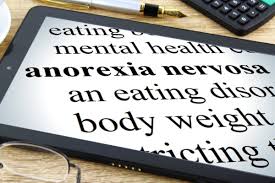PTSD – treatments

In my last blog post I spoke about the causes and symptoms of post-traumatic stress disorder (PTSD) and so I will now discuss what treatments there are for it. The main treatments are psychological therapies and medication, and such treatments can be successful even if many years have passed since the traumatic event(s) occurred. Seeking professional help, coming to terms with, and confronting the feelings a person has about such events is usually the only way of effectively treating PTSD.
After a traumatic event, two in every three people who develop problems actually get better within a few weeks without any need for treatment. Therefore, if a person has mild symptoms of PTSD, or have had symptoms for less than four weeks, a GP may recommend an approach named ‘watchful waiting’, which involves monitoring these symptoms to see if they improve or not. If this is recommended, a follow-up appointment should be made within a month.
When a person has had PTSD symptoms for more than four weeks, or their symptoms are severe, a GP will often carry out an initial assessment and refer the person to a mental health specialist for further assessment and treatment; this specialist may be a community psychiatric nurse, a psychiatrist, or a psychologist.
When a person does require treatment, psychological therapies are usually recommended first, while a combination of psychological therapy and medication may be recommended if a person has severe or persistent PTSD. The main types of psychological therapies used to treat people with PTSD are cognitive behavioural therapy (CBT), eye movement desensitisation and reprocessing (EMDR), and group therapy.
CBT focuses on helping a person change the way they think and act, which allows them to manage their problems. Trauma-focused CBT uses a range of techniques to help a person come to terms with the traumatic events they have encountered, for example they may ask the person to think about the experience in detail in order to confront the memories. In this process, the therapist can provide help to be able to cope with any distress, and identify any unhelpful thoughts or misrepresentations regarding the traumatic experience. They can also help the person gain control of their fear and distress that is caused by changing the negative way they think about the experience.
EMDR has been found to reduce the symptoms of PTSD and it involves making side-to-side eye movements while recalling the traumatic experience. This can be carried out by following the therapist’s finger, the tapping of their finger, or playing a tone. EMDR is a relatively new treatment and it is not completely clear how it works, but it may help with the negative way the person thinks about the trauma.
Group therapy can be used when a person may find it helpful to talk about their own experiences with other people who have PTSD, as it can help them find a way to manage the symptoms and understand what the condition is. There are also charities that provide support groups for PTSD, including the areas of military service, being a victim of a crime, and bereavement. Links to these specific support groups can be found in the reference below.
PTSD within adults can be treated with medication, but usually when psychological therapies have not been used or would not be effective (for example, if there is an ongoing threat of further trauma, such as domestic violence), or if psychological therapies have made little or no help.
The first step can be actually seeking help, and so hopefully by outlining the various ways PTSD can be treated, it can also be highlighted that there is always help available.
Sarah Keeping MBPsS MSc PgDip GDip BA (Hons) Cert HE
Follow Sarah on twitter at @keepingapproach
References
https://www.nhs.uk/conditions/post-traumatic-stress-disorder-ptsd/treatment/



